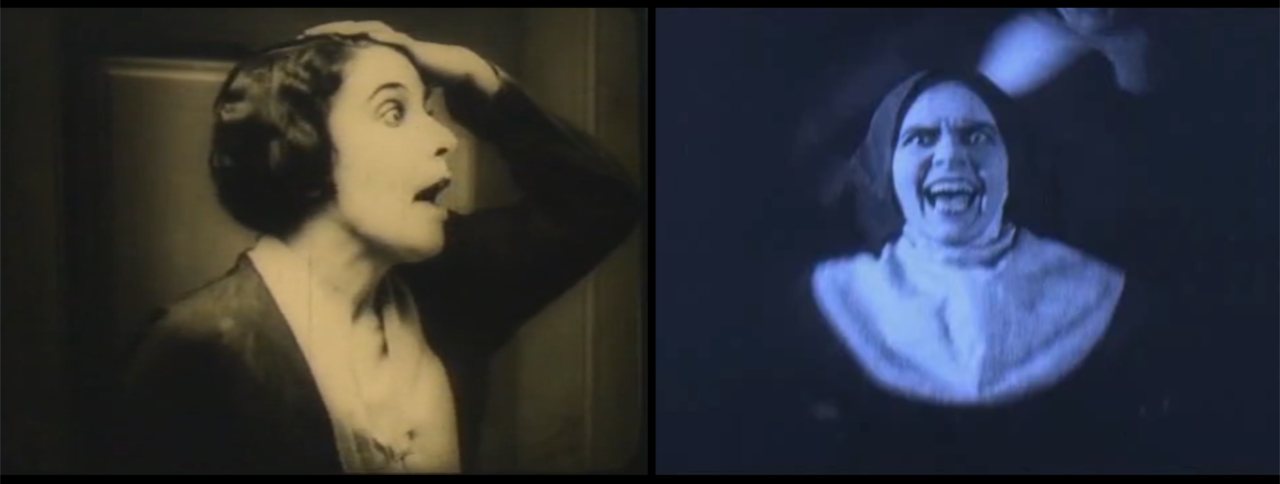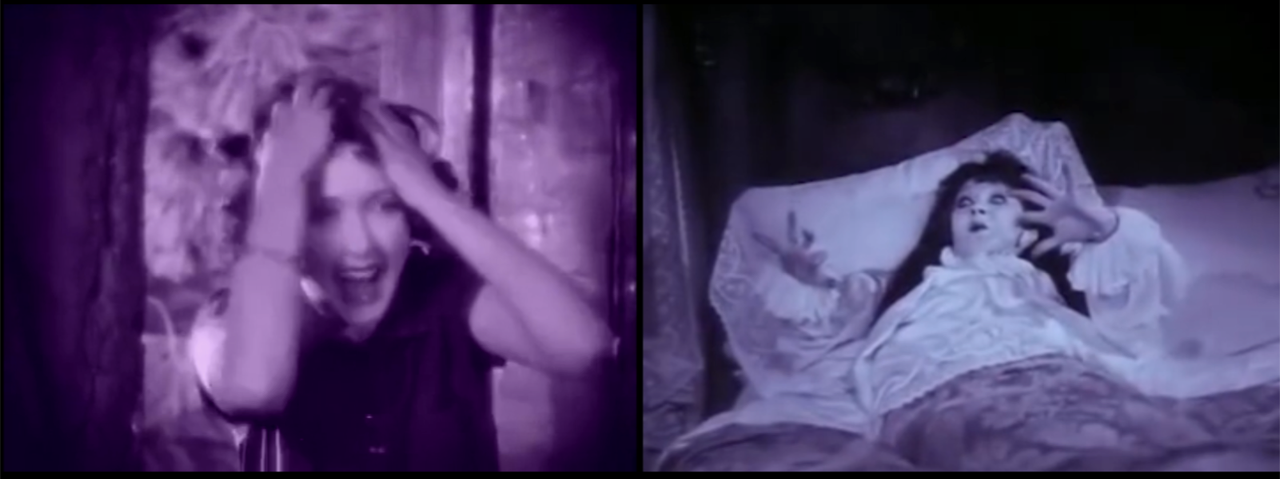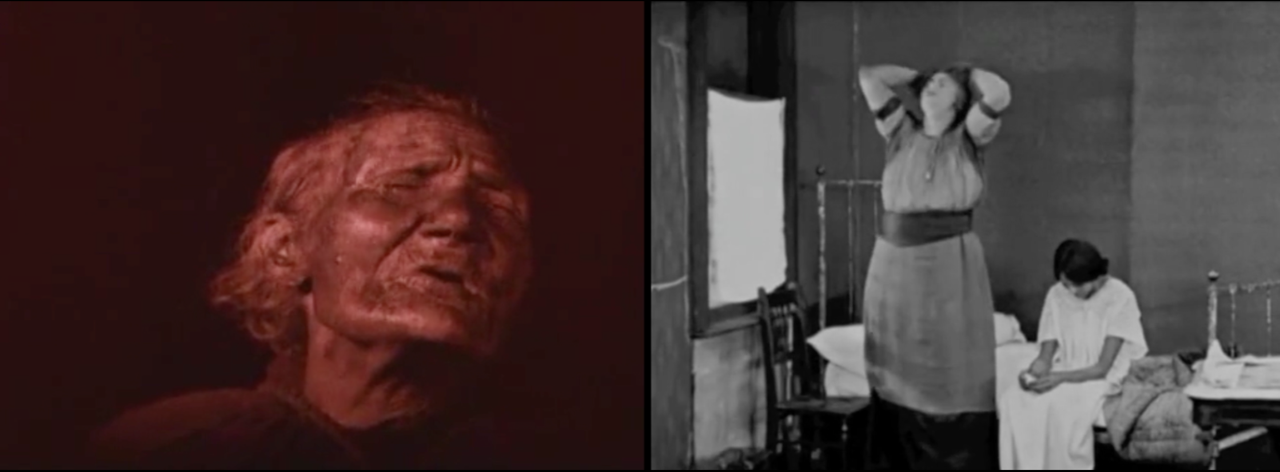edge of doom
A short succession of splits-screens gathers women in the throes of extreme states, screaming, with eyes wide, arms thrown up in dismay, angular eyebrows, stunned mouths – laying, running, standing, leaping to their feet: instants of extreme emotions sought and found in silent films of the 1920s. Fury, rage, pain, horror, fear and disgust present a kaleidoscope of prototypical affective gestures stripped of all narrative logic. Faces and bodies. The paired emotions seen on screen reciprocally intensify one another or create friction. Michaela Grill edited her found images like a music video to a piece composed by Sophie Trudeau, taken from the "Confinement Songs", recorded at the beginning of the Covid-19 lockdown. Recurrent arcs of rising musical suspense thwart any kind of catharsis, which nonetheless can be imagined as a possibility. The unanchored emotional affects come across as an unstructured bodily knowledge that rubs up against the blocked ability to act, a pandemic overload as well as a subcutaneous, ever-present edginess. (Madeleine Bernstorff)
Translation: Eve Heller
Grill and Trudeau focused on the raw emotion that arrose during this time of confinement: worry, doom, hopelessness, despair. Taking silent film as their raw material, they built a powerful emotional vignette of a moment in time. (production note)
Ruma 2021 - Mr.Vorky Film Festival - Special Mention (Award)
An effective montage analysis shows the faces of the women in the film - and when there's drama, women exaggerate as if the world is on the edge of doom. In addition to insights into the ways of acting in silent cinema and to the fascination with human face, viewers still have to ask themselves: why did filmmakers tell women to exaggerate in dramatic scenes as if it were the end of the world? Feminism in a three-minute found-footage movie comes when you least expect it.
Special mention is given to edge of doom by Michaela Grill. / RUMA Mr.Vorky Ffilm Festival 2021
edge of doom
2020
Canada, Austria
3 min



